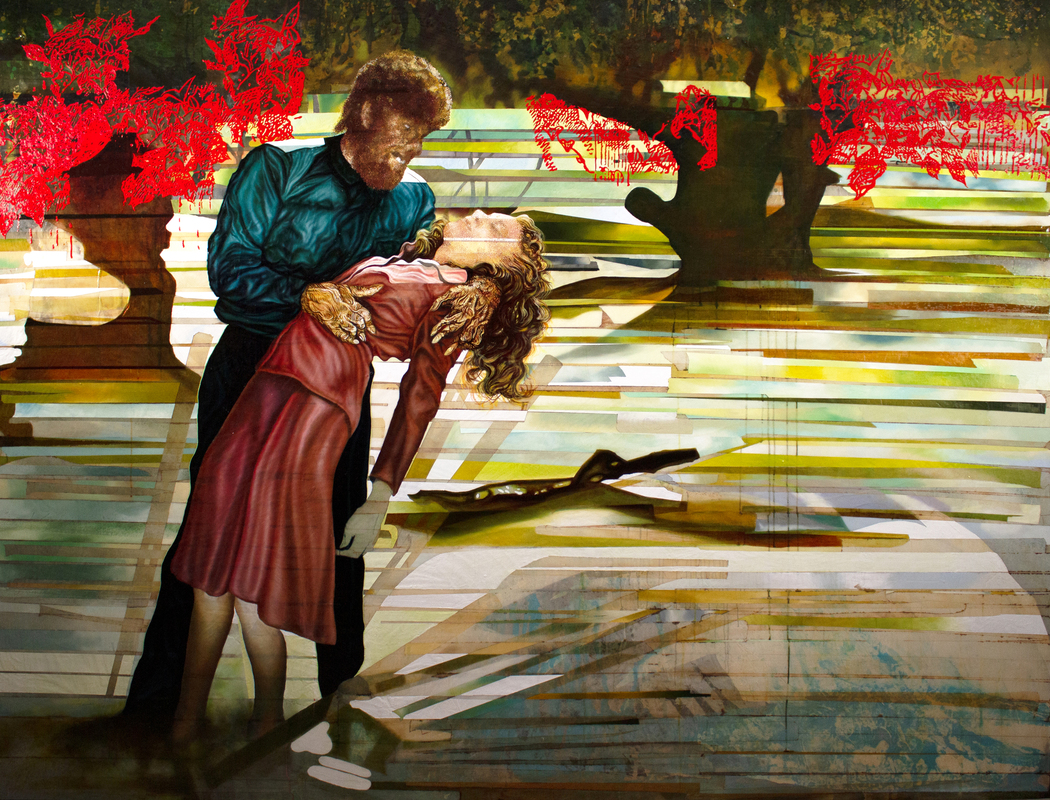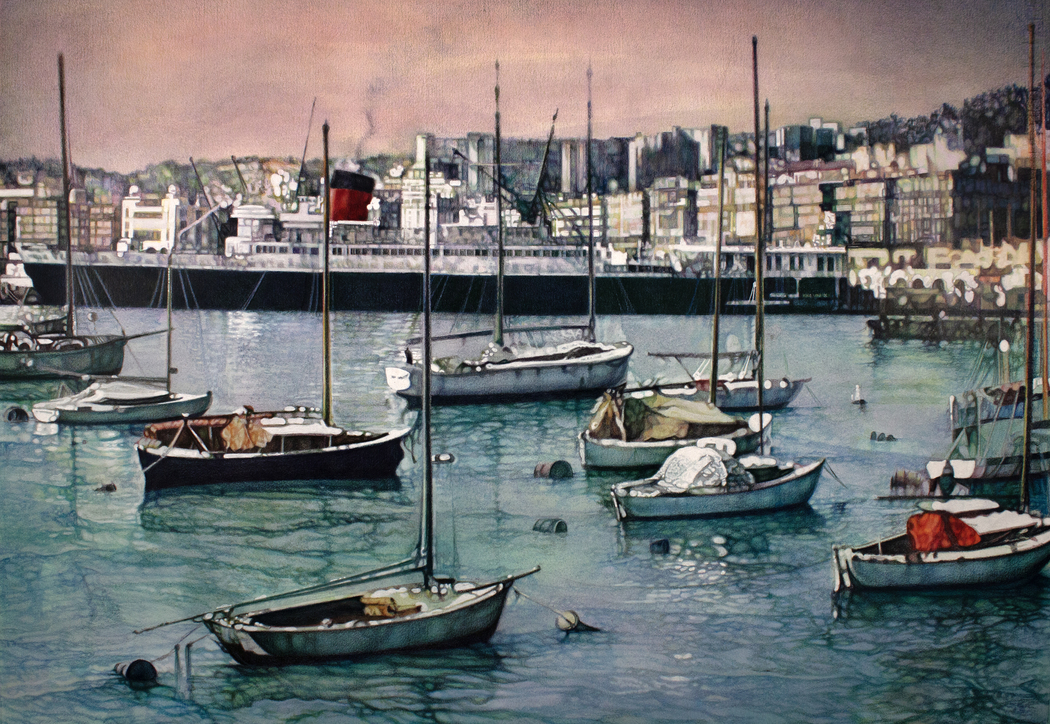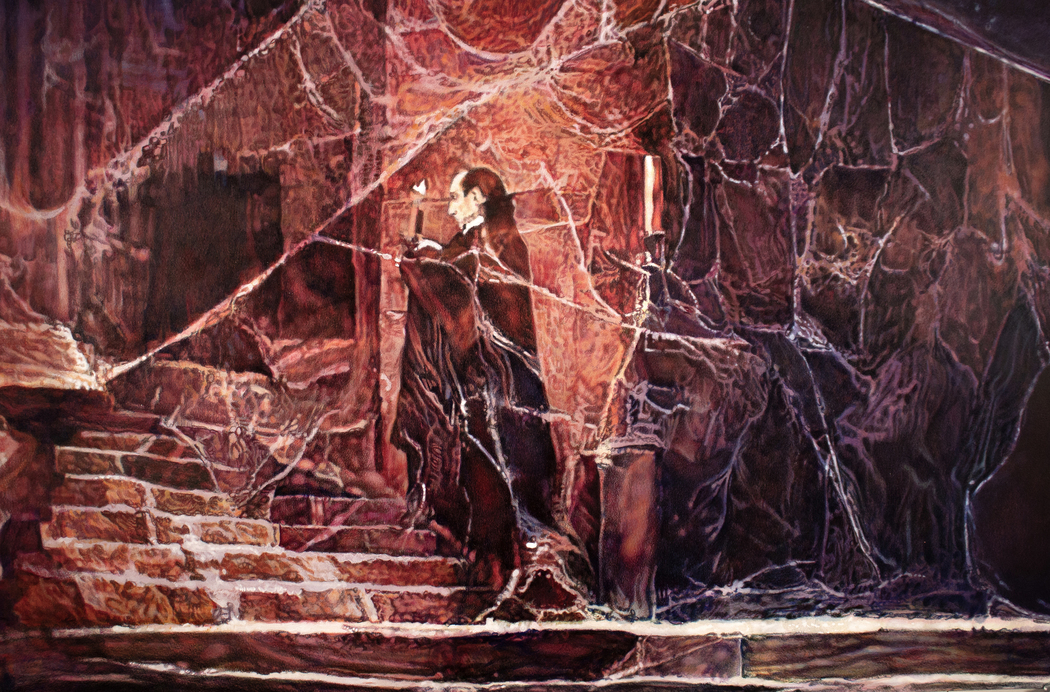Geo Sipp
Where do you live: Kennesaw, Georgia
Your education: BFA, University of Florida; MFA, Clemson University
Website | Instagram
 Geo Sipp | Brooklyn Navy Yards
Geo Sipp | Brooklyn Navy Yards
How did your experiences working with top international advertising agencies influence your artistic journey?
Time management, attention to detail, and discipline, to name a few. And solving the problems necessary to serve the client. I thrived on the energy of building and creating collaboratively, of bringing people together to share ideas that, when ultimately implemented, result in a positive experience for all involved. That can happen in an ad agency bullpen or in a studio. And in the classroom. And at the core of it all is how one works with others. Listening and treating people with dignity, respect, and empathy are critical to effectively applying my work.
Can you share more about the themes you explore in your graphic novel, ‘Wolves in the City,’ and what inspired you to choose the French-Algerian War as its subject?
I want to create a graphic narrative that’s relevant to the depth and complexity of the human condition, particularly when we are in conflict. I also want to create a humanist fable. I had seen the sweeping epic Lawrence of Arabia and the film The Battle of Algiers, which I thought was magnificent, and it inspired me to read Henri Alleg’s The Question, which documented his imprisonment in Algeria and the torture he endured at the hands of the French paratroopers. It speaks to the moral and political effects of torture on both the victim and the perpetrator. The paratroopers were a unit of the French Foreign Legion. In developing Wolves in the City, I aimed to weave a war story that still resonates with the fantasy of American popular mythology and evokes the romance of older adventure comic strips. I discovered this in the dark, romantic myth of the French Foreign Legion. Haunted men from everywhere, fighting anywhere, for causes not their own. There was a time in America when one could join the Legion to escape a troubled past and start a new life or aspire to a greater sense of adventure. This notion was popularized in films such as Beau Geste, March or Die, and even in comedies starring Laurel and Hardy and Abbott and Costello. Indeed, upon joining the French Foreign Legion, one took on a new identity. What person in America hasn’t considered getting in the car and simply driving south? It’s the same shared cultural myth of being a cowboy, riding into a new town, and stepping into a saloon filled with various characters, all fraught with the risks of danger.
 Geo Sipp | Wolfman
Geo Sipp | Wolfman
Your work has been displayed internationally, from New York to Algeria. What impact has traveling and exhibiting globally had on your artistic perspective?
As a storyteller, I empathize with other countries’ cultural perspectives and differing aesthetics.
As a director of the School of Art and Design, how do you balance your administrative responsibilities with your personal artistic practice?
My priority is our students and the effective management of the School and the Zuckerman Museum of Art, which takes up most of my time. However, it’s important for me to spend some time every day at the drawing table. I try to work at least an hour every day in my studio, usually between 5:30 and 7:00 a.m., and I dedicate Friday afternoons to making work.
 Geo Sipp | Harbor of Algiers
Geo Sipp | Harbor of AlgiersCan you describe your creative process? How do you approach each new project, from initial concept to finished piece?
My working process is quite methodical. I love the research and problem-solving that comes with my projects. I read a lot; I want to be well-informed and make visual connections and associations with words. I write notes and make many rough thumbnail sketches to determine compositions. I refine the sketches to ascertain what will work most effectively. Then, I proceed with the piece. I don’t trace, preferring to draw freehand and allow for the work to evolve. I use a technique that requires me to respond to each step with a decision for direction, allowing for chance.
You have worked with many high-profile clients like Coca-Cola and ABC Television. How do you maintain artistic integrity when working with commercial projects?
The process for creating my commercial work is the same as it is for my personal projects, although the audience differs. In commercial work, the goal is to persuade, sell, and generate interest from the target market. The visual language in image-making follows the same grammar. The key difference is that the client, rather than I, determines the visual problem to solve. I enjoy the challenges of the research process.
 Geo Sipp | Dracula revised 6 CQ
Geo Sipp | Dracula revised 6 CQ
What do you find most rewarding about being involved in both teaching and creating art?
I worked in the private sector before entering higher education. It is gratifying to share my experience, and I tell students that adapting and remaining flexible is essential in a creative career. This career involves creative problem-solving and design thinking. Being intellectually curious, reading books and newspapers, and drawing every day are crucial, especially for someone pursuing a career in art. Sharing ideas and generating buy-in are integral to the creative process. Helping students develop their artistic voices is very affirming, and good students challenge me to do better work.

Leave a Reply